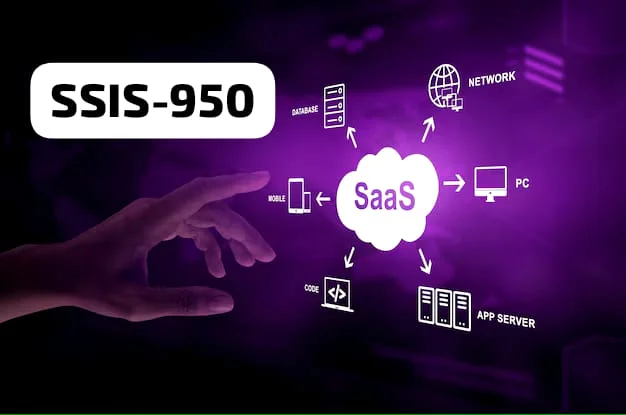Introduction
SQL Server Integration Services (SSIS) is a powerful data integration and workflow automation tool that has been widely used in enterprise environments for managing data extraction, transformation, and loading (ETL) processes. SSIS enables businesses to move and manipulate data efficiently across various sources and destinations.
One of the key aspects of SSIS is its versioning system, which ensures compatibility with specific SQL Server releases. The SSIS 950 package format is associated with SQL Server 2008 and SQL Server 2008 R2, making it a crucial component for businesses that rely on these versions. In this article, we will explore the SSIS 950 package format, its features, benefits, best practices, and its role in modern data integration.
What is SSIS 950?
SSIS 950 refers to the package version format used in SQL Server Integration Services for SQL Server 2008 and SQL Server 2008 R2. Every SSIS package has a version number that determines its compatibility with a specific SQL Server environment.
The versioning system in SSIS works as follows:
- SSIS 90 – Used in SQL Server 2005
- SSIS 110 – Used in SQL Server 2012
- SSIS 120 – Used in SQL Server 2014
- SSIS 130 – Used in SQL Server 2016
- SSIS 140 – Used in SQL Server 2017
- SSIS 150 – Used in SQL Server 2019
Since SSIS 950 is designed for SQL Server 2008 and 2008 R2, it plays a vital role in maintaining backward compatibility for organizations that have not yet upgraded to newer versions.
Key Features of SSIS 950
SSIS 950 comes with a set of robust features designed to streamline ETL operations and enhance data integration workflows. Here are some of the most notable features:
1. Data Flow and Control Flow Enhancements
SSIS 950 allows users to design complex data flow processes using a variety of built-in transformations. It also provides a control flow mechanism, enabling users to define the sequence in which tasks execute based on conditional logic and dependencies.
2. Improved Performance with Parallel Execution
One of the major improvements in SSIS 950 is its parallel execution capabilities. This allows multiple tasks and transformations to be executed concurrently, significantly improving performance and reducing execution time for large ETL processes.
3. Advanced Logging and Error Handling
With SSIS 950, users can implement custom logging to track package execution details. The built-in error handling features ensure that failures are logged and appropriately managed without interrupting the entire workflow.
4. Data Integration with Various Sources
SSIS 950 supports multiple data sources, including:
- SQL Server
- Oracle
- Excel
- Flat files
- ODBC and OLE DB sources
This flexibility makes it easy to integrate data from different platforms into a centralized system.
5. Script Task and Script Component Support
SSIS 950 allows developers to use C# or VB.NET scripts within packages, providing extended customization capabilities. This feature is particularly useful for handling custom data processing and complex business logic.
6. Package Deployment and Configuration
SSIS 950 supports package deployment models, allowing developers to easily move packages between development, testing, and production environments. Configuration settings can be stored in XML files, SQL Server configurations, or environment variables.
Advantages of Using SSIS 950
Despite being an older version, SSIS 950 offers numerous advantages that make it a viable choice for organizations still using SQL Server 2008 and 2008 R2.
1. Compatibility and Stability
SSIS 950 is fully compatible with SQL Server 2008 and 2008 R2, ensuring seamless package execution without compatibility issues. Organizations that rely on legacy systems benefit from this stability.
2. Cost-Effective Solution
Since many businesses are still running SQL Server 2008, upgrading to newer versions can be costly. SSIS 950 provides a cost-effective ETL solution without requiring immediate investment in newer SQL Server versions.
3. Efficient Data Processing
SSIS 950 efficiently handles large volumes of data through its optimized buffer management and parallel processing capabilities, making it suitable for enterprise-level ETL processes.
4. Ease of Use with Drag-and-Drop Interface
The SSIS 950 development environment (SQL Server Business Intelligence Development Studio – BIDS) offers a user-friendly drag-and-drop interface, enabling users to design complex workflows without extensive coding knowledge.
Challenges and Limitations of SSIS 950
While SSIS 950 is a powerful tool, it does have certain limitations that organizations should consider:
1. End of Support for SQL Server 2008 and 2008 R2
Microsoft ended support for SQL Server 2008 and 2008 R2 in July 2019, meaning that businesses using SSIS 950 no longer receive security updates or official support from Microsoft.
2. Lack of Modern Features
Compared to newer SSIS versions, SSIS 950 lacks advanced data transformations, cloud integration, and improved debugging tools. Organizations that require modern ETL functionalities may need to consider upgrading.
3. Limited Integration with Cloud Services
SSIS 950 does not offer native support for cloud-based data sources like Azure, Amazon S3, or Google Cloud Storage. As cloud adoption increases, this limitation can be a major drawback for businesses seeking to modernize their infrastructure.
Best Practices for Using SSIS 950
For organizations that continue to use SSIS 950, following best practices can help maximize performance and efficiency:
1. Optimize Data Flow Performance
- Use bulk inserts to speed up data loading.
- Minimize transformations within SSIS and handle complex processing in the source database if possible.
2. Implement Robust Logging and Monitoring
- Enable package logging to track execution details.
- Set up alerts for failures and performance issues to ensure quick resolution.
3. Secure SSIS Packages
- Encrypt sensitive data in SSIS packages using package protection levels.
- Use Windows Authentication instead of storing credentials within the package.
4. Plan for Future Migrations
- While SSIS 950 is stable, organizations should prepare to upgrade to SSIS 2012 or later to take advantage of improved features and ongoing Microsoft support.
Migrating from SSIS 950 to a Newer Version
If your organization is considering migrating from SSIS 950 to a newer version, follow these steps:
- Assess Existing Packages – Identify all SSIS 950 packages and evaluate dependencies.
- Upgrade to a Supported SQL Server Version – Choose an appropriate version (2012, 2016, 2019, or later).
- Use SSIS Package Upgrade Wizard – SQL Server provides an Upgrade Wizard to help convert SSIS 950 packages to newer formats.
- Test Migration in a Development Environment – Before deployment, test packages thoroughly to ensure compatibility and performance.
- Implement Necessary Code Modifications – Some components may require rewriting due to deprecated features in newer SSIS versions.
Conclusion
SSIS 950 played a critical role in SQL Server 2008 and 2008 R2 environments, providing businesses with a powerful ETL tool for data integration and workflow automation. While it offers stability and efficiency, its lack of modern features and Microsoft’s discontinued support make it less viable for long-term use.
Organizations using SSIS 950 should weigh the benefits of upgrading to newer SSIS versions to take advantage of improved performance, security updates, and enhanced integration capabilities. However, for businesses that need to maintain legacy systems, SSIS 950 remains a reliable and functional choice for managing data workflows.

